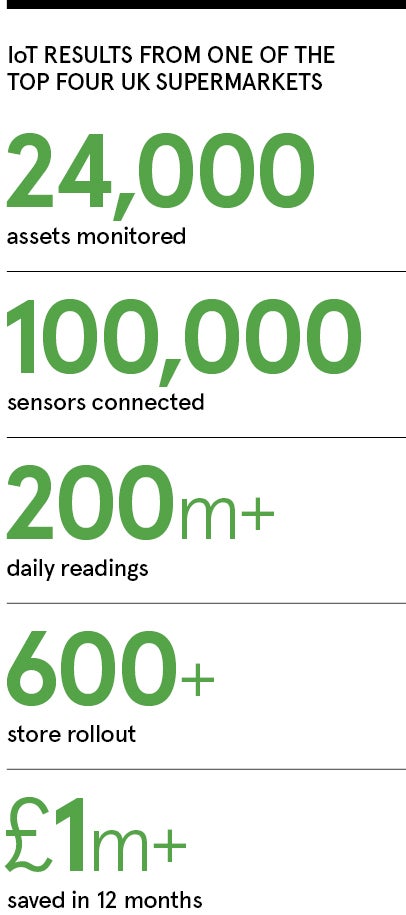Smart connectivity is now enabling some of the UK’s most intensive energy users to monitor what they use, drastically improve energy efficiency and slash consumption at a time when all eyes are on carbon neutrality.
“Winning businesses will be increasingly defined by their ability to reduce their carbon footprint. Advances in cloud and edge-based technology are a real gamechanger because they transform energy-consuming assets into intelligent, automated devices that can boost efficiency,” explains Jordan Appleson, chief executive of Hark, a producer of real-time, cloud-based monitoring and control systems.
Digital technologies under the internet of things (IoT) umbrella are predicted to reduce global emissions by up to 15 per cent in the next decade. This will be critical in tackling climate change and meeting the Paris Climate Accord goals. Retail food outlets alone are responsible for 3 per cent of all electricity consumed in the UK and 1 per cent of greenhouse gas emissions. 
Yet the UK government has said its energy targets for commercial buildings will not be met, the market isn’t delivering change fast enough and a step-change is needed.
“Deploying IoT at scale, nationwide, could help. It’s one thing to monitor and adjust a single refrigerator or a bank of lights, it’s another to do this across an entire chain of supermarkets or offices, at thousands of locations. Then you realise what adding intelligent controls achieves. The efficiency gains are impressive, making a real difference to the bottom line,” says Appleson, whose Hark Platform is used by the biggest names in retail.
“Existing sensors in old assets can be connected and overlaid with data from new machinery, creating a unified data feed. Machine-learning algorithms help make predictions on energy use, detecting anomalies, say a refrigerator using more energy than it should, or a high-energy asset that could be automatically turned off when not in use. It’s about knowing where the high-value, low-hanging fruit is when it comes to efficiency gains.”
Connected IoT devices feed information from the edge to the cloud in real time and the challenge is knowing how to analyse the sheer volume of data intelligently. Standardisation is difficult as there’s no cookie-cutter model and no two companies are the same. This is where case studies and experience are crucial, as is understanding the end-to-end picture of energy use.
“You have to be agile, start off in one location, with a couple of problems, and scale up. Forward-thinking companies get it. It’s a journey with our clients. When it becomes a shared challenge for everyone, we achieve great things,” says Appleson, whose award-winning, plug-and-play Hark Platform is deployed by life science and manufacturing companies, logistic firms and smart building operators.
“Changing human behaviour is the biggest issue. You need to articulate energy efficiency in peoples’ everyday lives. By using push notifications to politely nudge people, we can notify facilities’ managers by text to switch off devices, manage energy use or operate machines efficiently, with feedback from connected devices.”
IoT is driving more automation, especially with building heating and cooling systems, which are huge energy consumers. If the system knows how many people are in there in real time, then this can be used to automatically turn off the system when everyone’s left, conserving power. This is useful during peak times when energy costs are highest.
“We need to get a lot smarter about how we use energy. IoT has so much to offer. We can also predict when a machine is likely to break down, pre-empting maintenance. Algorithms now automatically analyse use patterns, sending real-time alerts if something changes. We then prioritise callouts for engineers; this has an indirect effect on fuel consumption for the person sent to fix the asset. Every little counts,” Appleson concludes.
For more information please visit www.harksys.com


